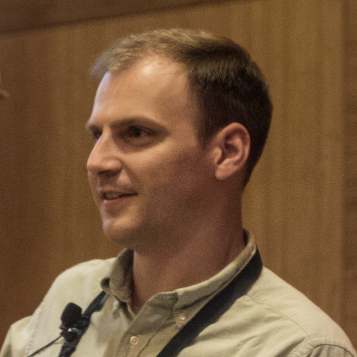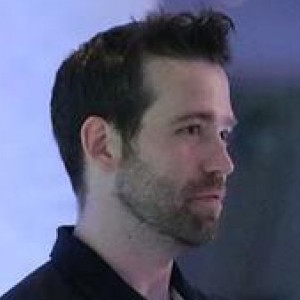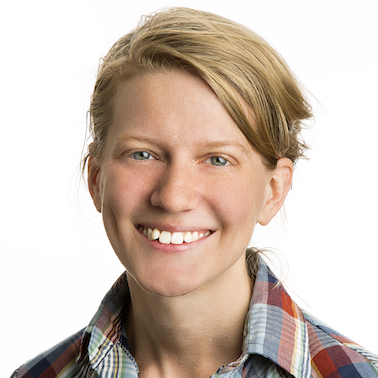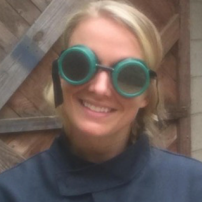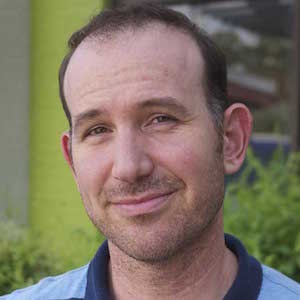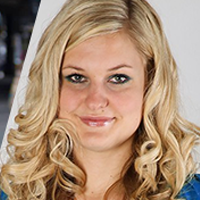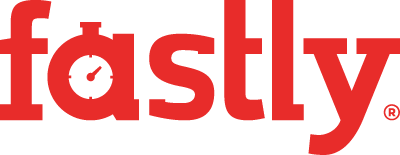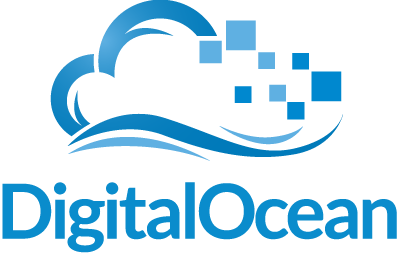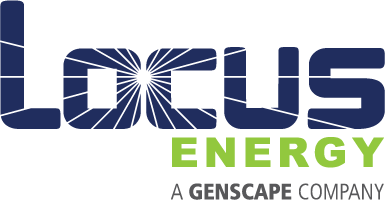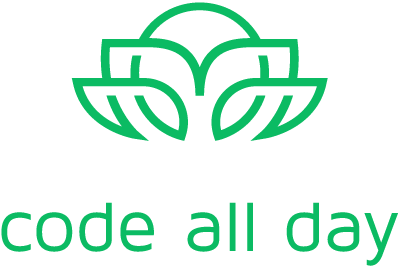March 28, 29 & 30
Portland, OR
Register
Speaker Lineup
-
Yehuda Katz
Yehuda is a member of the Ember.js, Ruby on Rails and jQuery Core Teams; his 9-to-5 home is at the startup he founded, Tilde Inc, where he works on Skylight, the smart profiler for Rails. Yehuda spends most of his time hacking on open source—his main projects, along with others, like Thor, Handlebars and Janus—and traveling the world doing open source evangelism work.
Session: Opening Keynote
Check back in January for full details on the agenda :)
Session: The Future of Ember Templating
This talk is a technical deep dive into the implementation of Glimmer 2, and what it will enable going forward.
It will cover the basic architecture of Glimmer 2, how it integrates with Ember, and how it fits in with FastBoot, Progressive Web Apps, and Off Main Thread rendering.
-
Tom Dale
Tom is a member of the Ember Core Team. He's a former Apple engineer who first gained expert front-end JavaScript skills working on MobileMe and iCloud. He's a super hipster, and still isn't sure if it's serious or ironic.
Session: Opening Keynote
Check back in January for full details on the agenda :)
-
Oren Teich
Oren is co-founder of Canvas, a writing tool for teams of nerds. Previously he was GM of Heroku where he had fun helping grow it from 9 to 150 people. A lapsed developer, he still builds analytics programs for fun, but the rest of the team would cause bodily harm before letting him ship code to customers.
Session: Closing Keynote: Reversing the River
There have been some amazing, audacious public projects. Chicago in the second half of the 19th century is up there at the top. There are a ton of lessons to be learned from 163 year old public works projects in building software today.
-
Leah Silber
Leah is an all-around open source advocate. During the day time, she's CEO at Tilde Inc, the open-source-centric company behind Skylight. In her spare time, in addition to running EmberConf, Leah works on GoGaRuCo, RailsConf, and a number of User Groups. She's a retired member of the jQuery Core Team, and a member of the Ember Core Team.
Session: EmberConf MiniTalks
Think lightning talks, but better curated and better prepared. We've selected a handful of really great topics that are critical to get before the EmberConf audience, but not neccessarily needing a full 30 minutes.
-
Matthew Beale
Matthew is an Ember Core Team member and co-founder of the NYC consulting firm 201 Created. He co-authored the authentication library Torii as well as the Mobiledoc document format and WYSIWYG editor. Matthew writes about the web at madhatted.com.
Training: Contributors Workshop
Ember stands on the shoulders of hundreds of contributors. Some land a small bugfix, and others refactor entire APIs. Some write documentation or improve CI reliability, and yet other help with deployment and automation. All of them started small before making a larger contribution.
Join us for a loosely structured day of hacker hours and instruction that will include presentations on how to make a PR to Ember, tutorials on how to contribute to documentation, and everything you need to know about how to collaborate on RFCs.
This Workshop is sponsored by 201 Created, and the $29 registration fee will go toward conference scholarship programs.
Lunch will be served.
Session: Interoperable Component Patterns
Though component and custom element patterns have become the standard for web application architecture, communicating from one solution to another remains fogged by guesswork and opinion.
How should you write a web component that needs to be compatible with Ember and other frameworks? Where are the tradeoffs between purity of design and ergonomics? In a talk touching on libraries and standards, come learn how to write component code useful across many environments.
-
Stefan Penner
Longboarding Canadian, OSS addict, Ember.js Core Team Member, living in San Jose and working at Yahoo.
Training: Building Stateful UI
This workshop is designed for both the intermediate and advanced Ember.js developer. Understanding of core Ember.js concepts is assumed, as we plan to cover more advanced topics.
As we know, Ember.js aims to enable developers by giving them leverage of an entire ecosystem. This workshop aims to build on that foundation by distilling advanced patterns used in real life ambitious applications into a series of lab like exercises, discussions and lessons.
In the real world, latency is variable, requests fail, the features are due Tuesday and users still expect a good experience. Attendees should come away from this training enabled, and confident to tackle advanced user interfaces, without succumbing to excess complexity.
As such, the general theme will revolve around building reliable state-full user interface, while keeping implementations idiomatic, maintainable and most importantly enjoyable.
High Level Topics
- TDD/Maintainability
- Ephemeral and Persistent State
- Asynchrony/Latency
- Rich user experiences
- Reliability in the face of failure
- Keeping complexity low and productivity high
Expectations
- Intermediate to advanced Ember.js knowledge
- Laptop with working installation of
ember-cli(latest stable version) andnpm - Pair programming encouraged!
Ticket price of $299, class size limited to 30 students.
Session:
ember-cli: The Next GenerationComing Soon!
-
John Kleinschmidt
John Kleinschmidt is the lead developer for hospitalrun, an open source project to provide modern software for charitable hospitals in the developing world. John works at CURE International as the Director of Technology Development. John hails from Harrisburg, PA where he lives with his wife and 3 kids.
Session: Using Service Workers in Ember
Service Workers are now available in browsers but why should we as Ember developers care about them?
In this talk we will examine some of the common use cases for Service Workers and patterns for implementing them in your Ember applications.
-
Chris Ball
Chris is the Founder of Echobind, a consultancy specializing in Rails and Ember. When he’s not helping clients create great products, Chris works on From Rails to Ember as a way to guide developers with Rails experience through the transition of using Ember as a front-end framework.
Session: Cross-Pollinating Communities: We All Win
You may have heard the quote, "Good artists copy, great artists steal."
Ember's origins were inspired by Cocoa. Ember has taken many cues from Rails, the biggest coming in the form of strong framework conventions. In 1.13, Ember's rendering engine was rewritten based on concepts pioneered by React. Instead of writing their own cli from the ground up, Angular has embraced
ember-cli.Let's examine past and future benefits of sharing ideas, and what it means for our favorite framework and our industry as a whole.
-
Brenna O'Brien
Brenna is a front-end engineer at TED, where she works on internal tools built with Ember. She is also an organizer of NodeSchool Toronto. She loves building communities, mixing code with math and geometry, and outer space.
Session: <select>ing Good Ember Patterns
What's in an Ember <select> element? For a long time, the answer was two-way data binding, observers, and an obscured DOM, along with the challenges and bugs that went with it.
Today, we can move beyond the
{{view “select”}}helper and render this common UI element using native DOM and one-way data flow. Through the lens of the select element, both as standalone code and a re-usable component, we’ll learn how and why to use good Ember patterns like data-down, actions up (DDAU), plus some handy new Ember features like closure actions and themutand{{get}}helpers. -
Brigitte Warner
Michigander by night. Baltimoron by day. Taught middle school math and technology before learning the computer-instruction trade. Now writes ruby and javascript like it's my job. Co-organizer of the Baltimore Hackathon, coach at Rails Workshop for Women, mentor for Baltimore Women in Technology, and developer at Allovue.
Session: An Illustrated Guide to Ember
We'll approach Ember as an illustrated fairy tale: drawing upon the power of story telling to describe the creation of an Ember application through its inciting incident, caste of characters (object model), and the conflicts that arise and how our heroine overcomes them through wit and cleverness.
-
Felix Rieseberg
Felix is an Open Source Engineer at Microsoft, coding away on GitHub. Based in San Francisco, he works with projects like Ember Cli, npm, Travis, or Electron to unblock developers. He eats too many waffles, uses too many Gifs in commit messages, and sends pull requests full-time.
Session: Building Desktop Apps with Ember & Electron
You may have seen apps like Slack, Visual Studio Code, or Docker's Kitematic: desktop applications written using Node.js and Chromium. You might be hoping to build something similar.
Electron was originally built for the Atom editor, and enables developers to build beautiful cross-platform apps using the JavaScript we all love. When combined with Ember, you're looking at a fantastic desktop app development framework.
Ember and Electron are a match made in heaven, and this talk will teach you all you need to know to get started building desktop apps with Ember.
-
Ju Liu
Ju was born in a metropolis in China, then he moved as a kid to the sunny italian countryside. He started messing up with computers late in his life, but hasn't stopped yet. He got a Computer Science degree in Turin. After some time, he decided to go on a new adventure and moved to London, where he joined AlphaSights as a Ruby engineer. He loves Ruby, likes Javascript and is curious about functional programming, but most of all he is rarely serious about anything.
Session: How I Learned to Love Ember
"I’ve always been a backend guy. I love Ruby. Keep things simple. Oh no, not another JavaScript framework..."
This was me a year ago. Now I don't feel like this anymore. Matter of fact, the other day I caught myself saying:
"I can do everything in Ember!"
In this talk, I will narrate the journey that turned a hardened Ruby Engineer into an Ember enthusiast. I will recount how I escaped from the "New to Ember" pits of despair, how I fought in the "Upgrade Wars" and ultimately how it changed my mind about all software development.
As I learned Ember, I learned to love Ember.
-
Alex Blom
Alex is a Partner at Isle of Code, an Ember/Rails based boutique in Toronto. He has been hacking with Ember for approximately three years, and prior worked with Rails, Go & C.
Session: Building Mobile Applications with Ember
It is possible to create performant mobile applications with Ember and Cordova, and to achieve this with your existing Ember application. But most peoples first hybrid experience is seeing serious performance issues and stop ("It doesn’t feel native").
This talk will serve beginner and intermediate Ember developers looking to extend their application to mobile. It will touch on both the best tools in the Ember ecosystem, and best practices for optimization and performance.
-
Chris LoPresto
Chris LoPresto is a leader, software engineer, and musician. He works at Yapp and was previously CTO and co-founder of Plyfe. Prior to that his software career involved Patriot missiles and e-readers. Chris is an Eagle Scout and has visited 46 of the 50 states. He has performed on Late Night with David Letterman, ridden a private elevator with a pope, and swum a mile in Beijing. Chris lives in New York City and is always game to debate cake vs. pie.
Session: Living Style Guide Driven Development
Creating a living design system is essential to developing a cohesive experience for users over the lifetime of a product. Ember tooling and conventions make this easier than you might expect.
By organizing your application functionality into Ember components, you can easily build a living style guide to showcase key features, design patterns, and user interactions. This fashion of style guide driven development enables a rapid implementation and feedback cycle, a comprehensive overview of key features, and the blissful feeling of providing order in a chaotic world.
-
Kelly Senna
Kelly is a web developer at Big Nerd Ranch.
Session: Warp Speed Memory Management
In low level languages, primitives exist for memory management. Despite the C-like syntax, JavaScript is garbage collected, causing many front end developers to feel it does a great job of memory management for us. But how does it actually work and does it work how we think it does?
This session will discuss memory management in JavaScript (compared to other languages) and what is really going on behind your browser. Using an Ember.js application, we will also discuss best practices to optimize our code, how JavaScript and Ember optimizes for us, and ways we can address common pain points.
-
Vaidehi Joshi
Vaidehi is a web developer at Friends of The Web in Baltimore, Maryland, and a graduate of The Flatiron School. When she's not building or breaking things, you can find her writing, hiking, or eagerly awaiting the first snow of the year.
Session: Debugging Ember With Empathy
Denial, anger, bargaining, depression, acceptance. But I don't mean the five stages of grief—I'm talking about the five stages of debugging your first Ember app!
Learning how to navigate the building blocks of Ember can be difficult, but the even trickier thing is knowing where to start debugging while you're still learning the framework. One approach that I use is to put myself into my code's shoes.
In this talk, we'll connect with our objects to understand what's going on under the hood. Let's jump over some common first-time Ember hurdles together by debugging our code—with empathy.
-
Estelle DeBlois
Estelle is a Senior Developer at DockYard, a design and software consultancy in Boston, MA. Besides being an Ember.js enthusiast, she is also drawn to build systems and tools that help enhance a developer's workflow. She is the author of the
ember-cli-nwjsaddon, which provides development and packaging support for Ember.js desktop applications, and the co-maintainer ofember-suave, an opinionated JSCS linting addon for Ember CLI projects. She also loves piano, photography, and gaming.Session: Dissecting an Ember CLI Build
As the tooling ecosystem continues to evolve, developers nowadays can easily scaffold out a new Ember app and start being productive right away, without ever thinking of all the intricacies that go on behind a typical build command. But there comes a time when manipulating trees or nodes in Broccoli may be required to support a custom project architecture, or you may find yourself having to extend the build for specialized environments through addons.
Whether you face any one of those scenarios, or you simply want to know more of what goes on behind the curtain, this talk is for you.
-
Chad Hietala
Chad is a developer at LinkedIn working on large horizontal initiatives.
Session: Ember at Scale
Ember has primarily been known for allowing small teams extremely productive to ship ambitious applications to the web, what does this look like when you scale it out to hundreds of engineers and for a web property that has over 400 million users?
In this talk I will show how we shipped our first Ember application and how we addressed everything from tooling to performance.
-
Mike Pack
Mike has been building software in the browser for over 15 years. He fell in love with Ember in 2012 and they've been living happily ever after. He's a Denver-based software engineer with a Computer Science background and experience building complex systems for the world of startups, education, government, agency, and beyond. He relishes in solving tough business problems, mentoring, and growing the developer community.
Session: You're Building a Distributed System!
Whether you know it or not, you're building a distributed system. This becomes painfully obvious when taking Ember apps into the developing world. Flaky network connections pose real challenges for developers building stateful applications in the browser.
This talk is about my trials and tribulations taking Ember offline in Africa. We’ll look at the tools necessary to venture offline, how they apply to Ember specifically, and a little bit of theory to drive home the hard facts about how much fun you’ll have building a distributed system!
-
Ray Tiley
Ray works on an Ember app that controls TV stations.
Session: The Tale of Two Teams
So lets talk about two teams, both with old, messy, outdated code bases. One team chooses a framework, refactors behind the scenes, ships new features and one day have a shiny, modern code base.
The other rewrites it all, from scratch, with sprinkles of JavaScript. How did these two teams fare? In this talk we'll find out. Spoiler alert... both teams are happily using Ember today.
-
Matt McKenna
Matt is an engineering manager at Omada Health, a writer at 3quarksdaily.com, and a filmmaker at tacowednesday.com.
Session: Building a Game in Ember Starring Your Cat
Ember is generally used to build ambitious web applications, but what about ambitious web games starring your cat? In this talk, I'll go over how to use Ember to build, organize, and deploy HTML5-
canvasbased games.Using Ember to develop games shares the same benefits of using Ember to develop applications—both the toolchain and the conventions alleviate decision fatigue. For example, route-driven paths are great at handling levels, Liquid Fire provides lovely transitions for menus, and adapters provide a standard way to connect to backends for saving high scores.
-
Ivan Vanderbyl
Ivan is the co-organiser of the Melbourne Ember meetup, and one part of the Flood IO Trio (I just made that up). At Flood he builds shiny graphs and spends way too much time making them fast. Before founding Flood IO, Ivan was the front-end lead at DigitalOcean, where he introduced sharks to Ember (no Tomsters were hurt in the process).
Session: Compose Yourself with Ember and D3 Shape
Say you're building a chart, what's the most natural representation for specifying a visualization? A configurable chart component? Abstract components which can be used together to create something larger? Or low level primitives which can give you fine grained control over your presentation?
In this talk I will introduce D3 Shape, and demonstrate how you can compose reusable Components which solve all of the above requirements for quickly visualizing information in Ember.
-
Liz Baillie
Former cartoonist, current developer at Tilde, future sassy old woman with too many dogs.
Session: Easy-Bake Testing
Mocha? Chai? Qunit? Jasmine? What's the difference? Which one is best for me? How do I use these new integration tests? What are mocks and stubs and how should I use them?
With so many different testing frameworks, libraries, and addons, and so many different styles and approaches to testing your Ember apps, it can be daunting to get started building a test suite to meet your needs.
Don't be scared! I'm here with my nonthreatening lightbulb-powered Easy-Bake testing guide to help you out!
-
Lauren Elizabeth Tan
Lauren is a Senior Developer @DockYard. She gave her first ever conference talk at EmberConf last year, and loved it so much she decided to speak again. Lauren frequently writes about Ember.js at her blog on medium, enjoys bubble tea, and has a little puppy named Zelda.
Session: Idiomatic Ember: Finding the Sweet Spot of Performance and Productivity
With the release of Ember 2.0, many best practices established in the 1.x series are unfortunately no longer relevant. Lessons learnt from the React and Flux communities can help guide the path toward The Ember Way, with "Data Down, Actions Up" being one of the core philosophies.
In this beginner-friendly talk, we'll discuss patterns and anti-patterns for bringing Ember applications into the 2.x paradigm, and discover how ideas from Functional Programming and game rendering engines can inform us. We will also look at the roads ahead to see what future versions of Ember will bring.
-
Katie Gengler
Katie is a web developer, consultant, and OSS maintainer. She created EmberObserver.com.
Session: The Ember Addon Community
For nearly two years now, new Ember addons have been published daily. The availability of quality addons has grown to be a crucial part of the Ember experience.
Let’s talk about how addon developers, Ember contributors, and end-users have contributed to this ecosystem, and how we can each do our part to make Ember’s addon community even better.
-
Charles Lowell
Charles has been delivering bullet-proof software for over 18 years. An avid contributor to open source, he founded the Frontside in 2005 to help businesses deliver game-changing user interfaces to their customers. Also, he really, really, really, really likes to code. Really.
Session: Immutability is for UI, You, and I
Immutability. It may sound like an ominous something from the far-off galaxy of math, but in practice, it's one of the most pragmatic tools for thinking about UI.
In this talk we'll explore the problems that an immutable style solves, and how you can use it as a thought-tool to both design and implement more powerful and composable components.
Throughout we'll see just how deeply Ember supports this mode of thought at every step of the way.
-
Xavier Cambar
Lead frontend developer and API designer at PeopleDoc, my experiences evolve mostly around enterprise software and how to make it more fun to use as well as to build. My everyday goal is to break less and move faster and my current obsessions are: getting my drone to follow my kite, generative music and my Monome, Clojure, Phoenix and Ember. Beers are nice, too.
Session: Migrating an Existing App to Ember, Component After Component
While Ember is designed for building ambitious applications, the documentation and public resources mostly focus on new applications, making lots of things simpler to write from scratch.
This talk will share my experience migrating an existing application to Ember part after part. I'll share tips for how to avoid the unpopular "Big Bang rewrite" (minimizing the costs of adoption), and discuss the integration story and loose coupling of Ember.
-
James Kyle
James Kyle is a UI Engineer for CloudFlare and a core contributor to Babel. In his free time, you'll probably find James responding to GitHub issues, begrudgingly writing documentation, or maybe even playing Minecraft until 2am eating Apple Jacks cereal.
Session: How to Build a Compiler
Compilers are all around you: Babel, Handlebars/HTMLBars, Glimmer, Uglify, and more. In this talk we'll walk through every part of a compiler from the parser to the generator. Learn about visitors and traversal, paths, scopes, bindings, and everything else. By the end compilers shouldn't seem like magic, and maybe you'll even want to contribute back to them.
-
Jade Applegate
Jade Applegate is a Software Engineer at Fastly where she focuses on User Experience. In this role, she works with front-end technologies to create more beautiful and functional applications. She enjoys rapid prototyping, pair programming, and her Yorkie-mix named Pip. In her spare time, she likes to train for marathons and do handstands.
Session: The Great Migration: Redesigning and Rewriting our App in Ember.js
Many Embereños use the framework for their side projects, but have not yet had the opportunity to work on an Ember project in their professional lives. This talk will cover one team’s journey migrating a legacy codebase to Ember.js.
Key topics will include the redesign and rewrite of a highly complex and detailed customer-facing user dashboard, challenges faced when porting an application to Ember, and the results of the migration project in terms of improved application speed, security, and overall performance.
-
Godfrey Chan
Godfrey Chan is a member of the Ruby on Rails core team and an Ember.js contributor. He currently works at Tilde as an in-house Canadian. In his previous life, he was also an award-winning WordPress™ plugin author.
Session: The Future of Ember Templating
This talk is a technical deep dive into the implementation of Glimmer 2, and what it will enable going forward.
It will cover the basic architecture of Glimmer 2, how it integrates with Ember, and how it fits in with FastBoot, Progressive Web Apps, and Off Main Thread rendering.
-
Lisa Gringl
Lisa has been working as a digital designer for 4 years. In addition to user interface design she is also involved in creating HTML and CSS based templates. She is always working on improving her design workflow to integrate better with the development team. Because of her recently finished degree in this area, Lisa has a focus on mobile applications. She is currently working for Cropster, a company based in Austria and Sacramento in the coffee business, where she is overseeing all design work.
Session: Ember Between Design and Development
The bigger a project gets, the more important communication and consistency across the whole team becomes. In order to achieve this, it is critical to establish an integrated workflow with all team members. In this talk, a designer and a developer who worked together on various Ember projects will present an effective way of handling these challenges.
Three levels of documentation will be presented: A living styleguide for designers, a component guide for designers & developers and a JavaScript documentation for developers.
-
Francesco Novy
Francesco has been developing Ember-based web apps for three years. While JavaScript is his main responsibility, he is also deeply involved in all HTML and CSS development. Francesco has recently finished his Master’s program with a focus on Mobile Internet and is currently working for Cropster, a company based in Austria and Sacramento which develops services & solutions for all things coffee. Cropster’s newest product is a marketplace and auction platform for green coffee built with Ember.js.
Session: Ember Between Design and Development
The bigger a project gets, the more important communication and consistency across the whole team becomes. In order to achieve this, it is critical to establish an integrated workflow with all team members. In this talk, a designer and a developer who worked together on various Ember projects will present an effective way of handling these challenges.
Three levels of documentation will be presented: A living styleguide for designers, a component guide for designers & developers and a JavaScript documentation for developers.
-
Toran Billups
Toran Billups is a software professional with a passion for all things javascript. When he isn't debating the tradeoffs of one-way vs two-way databinding you can find him teaching 5th grade students python!
Training: Test Driven Development By Example
This workshop is designed to provide both the beginner and intermediate JavaScript developer in the Ember ecosystem with a solid understanding of test-driven-development. If you're familiar with the concepts behind testing or test-driven-development but you haven't yet applied them in your daily work this course will transform you into a more confident software engineer by working through several hours of live coding.
We start with the basics (
ember-cli,testem,ember-qunit) and quickly move into writing real software. Each section has both a lecture and hands-on lab to get you comfortable with the idea that testing can be a powerful feedback tool.Expert level JS/Ember experience is not required, but because the workshop is only a few hours we won't have enough time to teach the very basics of the language—so make sure you've got that knoweledge in advance. In addition, familiarity with
ember-cliwill be beneficial as each hands-on lab includes writing features and/or fixing bugs with the command line tooling.Introduction
- What is 'test-driven' and why should you care?
- A quick overview of
ember-cli/testem - Unit testing with
qunit - Integration testing with
ember-qunit - Acceptance testing with ember-testing
Outside-In TDD
- Start acceptance testing the new feature
- Discuss test friction and how to 'listen' for it
- Integration testing the web component in isolation
- Redefine 'unit test' as we decompose the data modeling requirement
The Feedback Loop in Action
- Describe a production bug that has crept into the system
- Deep dive on the thought process as we sift through routes/services/components
- Use advanced techniques like
pauseTest()anddone()to get feedback in the browser
Advanced Techniques
- Writing a custom async helper for file upload
- What registration and injection look like without the helpers
- How to extend
qunitwhen necessary
Ticket price of $299, class size limited to 15 students.
-
Bear Douglas
Bear Douglas is an accomplished public speaker with nearly 15 years’ experience on stage and in the performing arts. In the past three years alone, Bear has given over 130 professional presentations to technical and non-technical audiences of all sizes. She currently leads the mobile developer relations team at Twitter; previously, she was at Facebook and a smattering of SF-based startups.
Training: WHW Public Speaking 101
This Workshop is open to members of the EmberConf Women Helping Women Program.
This fun workshop is a mix of lecture, exercises, and discussion, focused on practical techniques and principles that can help you level up your skills for speaking to any size of group. Learn how to adapt your body language and content to communicate effectively to dozens, hundreds, or thousands of people—and how to recover when things don’t go as planned.
-
Cory Forsyth
Cory has over a decade of experience in startups and technology. His first venture after NYU's ITP program was outside.in, which was acquired by AOL in 2011.
Training: Contributors Workshop
Ember stands on the shoulders of hundreds of contributors. Some land a small bugfix, and others refactor entire APIs. Some write documentation or improve CI reliability, and yet other help with deployment and automation. All of them started small before making a larger contribution.
Join us for a loosely structured day of hacker hours and instruction that will include presentations on how to make a PR to Ember, tutorials on how to contribute to documentation, and everything you need to know about how to collaborate on RFCs.
This Workshop is sponsored by 201 Created, and the $29 registration fee will go toward conference scholarship programs.
Lunch will be served.
-
Nathaniel Bibler
Nathaniel Bibler is a co-founder and lead developer at Envy Labs and celebrating his 20th year in software development. He and Envy have been crafting and maintaining Ember applications since 2012. Nathaniel is also an active open-source contributor for both Ruby and Ember projects.
Training: Intermediate Ember
This is a live training session of Code School's not-yet-released Warming Up With Ember course, a follow-up to the free Try Ember course (both coming in February). This course teaches Ember application development using the current versions of Ember and Ember CLI. Participating in a live training session gives you the opportunity to ask questions and get personalized feedback from our experts and support staff.
This course targets early-to-intermediate Ember developers who are looking to learn and use application testing techniques, create Handlebars helpers, integrate with Ember addons, develop custom components, and, most importantly, work with Ember Data.
Like all Code School courses, this session is broken into small, focused, and comfortably consumable levels. These levels will each present a new set of concepts and techniques. Following each level's training portion, you will immediately use what you've learned to solve various coding and concept challenges.
It is expected that you come to this training session with an understanding of the basic concepts within Ember (the router, routes, templates, models, and components). If you're not there yet, be sure to get familiar with these concepts on your own or by completing Code School's free Try Ember course.
-
Igor Terzic
Coming Soon!
Training: Intermediate to Advanced Ember Data
The training is designed to get Ember developers more comfortable with customizing their Ember Data adapters and serializers and help them handle one off issues they might encounter when dealing with strange APIs in the wild. It will help both developers who need to modify their apps to work with APIs which are not fully JSON API compliant as well as aspiring adapter authors.
When you finish this training you will be able to quickly get going with Ember Data using your own adapter for custom backend APIs. And even if you still use the
JSONAPIAdapter, you will have a better understanding of how it works and will have learned multiple techniques for quickly solving common issues and customizing for the specific quirks of your backend.In the first part of this training you will go through a series of exercises which will guide you through writing a basic Ember Data adapter from scratch. This will expose you to the high level adapter APIs and help you understand how the production ready JSON API Adapter works.
The second part of the training will focus on using the knowledge gained from writing the adapter from the ground up and applying it to customizing the JSON API Adapter. We will show several common techniques for modifying the JSON API Adapter in order to solve complex issues when dealing with APIs which are not fully JSON API compliant.
This training assumes basic to intermediate knowledge and experience using Ember as well as a familiarity with using Ember Data.
Ticket price of $299, class size limited to 30. Proceeds of this class will be directed towards funds for conference speakers.
-
Mike North
Mike North is a speaker, startup adviser, and CTO of Levanto Financial. Previously, he was a UI architect in Yahoo's Ads & Data division, where he provided technical oversight and leadership over the company's ad platform, and over a dozen related products. Mike enjoys contributing to many open source projects, including those in the Ember.js ecosystem, and has a passion for improving developer ergonomics and productivity.
Training: Building Stateful UI
This workshop is designed for both the intermediate and advanced Ember.js developer. Understanding of core Ember.js concepts is assumed, as we plan to cover more advanced topics.
As we know, Ember.js aims to enable developers by giving them leverage of an entire ecosystem. This workshop aims to build on that foundation by distilling advanced patterns used in real life ambitious applications into a series of lab like exercises, discussions and lessons.
In the real world, latency is variable, requests fail, the features are due Tuesday and users still expect a good experience. Attendees should come away from this training enabled, and confident to tackle advanced user interfaces, without succumbing to excess complexity.
As such, the general theme will revolve around building reliable state-full user interface, while keeping implementations idiomatic, maintainable and most importantly enjoyable.
High Level Topics
- TDD/Maintainability
- Ephemeral and Persistent State
- Asynchrony/Latency
- Rich user experiences
- Reliability in the face of failure
- Keeping complexity low and productivity high
Expectations
- Intermediate to advanced Ember.js knowledge
- Laptop with working installation of
ember-cli(latest stable version) andnpm - Pair programming encouraged!
Ticket price of $299, class size limited to 30 students.
-
Brendan McLoughlin
Brendan McLoughlin is an Open Web Engineer at Bocoup and a maintainer of the Ember Data project. He enjoys writing testable JavaScript, pair programming with colleagues and clients, and emacs. In his free time, Brendan can be found reading, skiing, or learning to draw.
Training: Intermediate to Advanced Ember Data
The training is designed to get Ember developers more comfortable with customizing their Ember Data adapters and serializers and help them handle one off issues they might encounter when dealing with strange APIs in the wild. It will help both developers who need to modify their apps to work with APIs which are not fully JSON API compliant as well as aspiring adapter authors.
When you finish this training you will be able to quickly get going with Ember Data using your own adapter for custom backend APIs. And even if you still use the
JSONAPIAdapter, you will have a better understanding of how it works and will have learned multiple techniques for quickly solving common issues and customizing for the specific quirks of your backend.In the first part of this training you will go through a series of exercises which will guide you through writing a basic Ember Data adapter from scratch. This will expose you to the high level adapter APIs and help you understand how the production ready JSON API Adapter works.
The second part of the training will focus on using the knowledge gained from writing the adapter from the ground up and applying it to customizing the JSON API Adapter. We will show several common techniques for modifying the JSON API Adapter in order to solve complex issues when dealing with APIs which are not fully JSON API compliant.
This training assumes basic to intermediate knowledge and experience using Ember as well as a familiarity with using Ember Data.
Ticket price of $299, class size limited to 30. Proceeds of this class will be directed towards funds for conference speakers.




